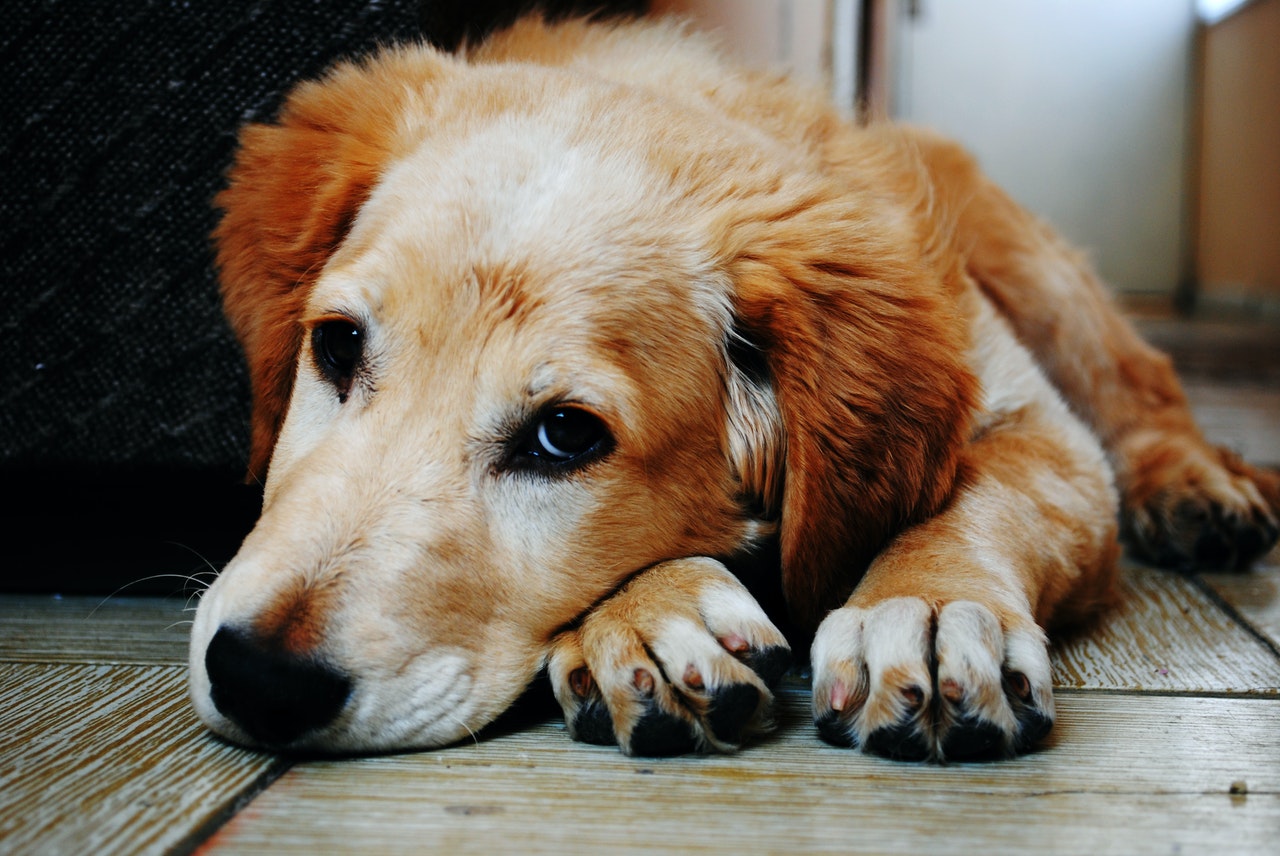If you’re the proud pet parent of an unspayed dog, you might find yourself the unsuspecting pet grandparent to an unwanted litter. Dogs can have their first heat cycle when they’re as young as six months old. Consequently, most veterinarians recommend spaying your dog around that age to prevent pregnancy. Spaying also reduces the risk of other health complications, such as mastitis and uterine cancer. But if your dog hasn’t been spayed, you might be wondering what to do when your dog is in heat. We’re here to help.

How to tell if your dog is in heat
Unlike female cats, dogs tend to produce discharge during the estrus phase. While many dogs go into heat at around six months old, it varies by breed. Large dogs may not go into heat until they’re around two years old, and toy breeds can experience their first cycle as early as four months old. Here’s what you should look for if you think your dog could be in heat.
- Discharge from the vulva (it ranges in color and can appear off-white, yellowish, pink, or bloody)
- Swelling of vulva
- Frequent urination
- Frequent licking of the genital area
- Behavioral changes around male dogs
- Laziness
- Increase in affectionate behavior
- Nervousness or aggression
Your dog’s behavior can change from cycle to cycle. Just because she’s cuddly and affectionate the first time she’s in heat doesn’t mean she won’t become aggressive the next time.
The stages of the heat cycle
There are four stages to a dog’s heat cycle, which lasts around 21 days. Estrus — the stage of the cycle where dogs can become pregnant — typically lasts from one and a half to two weeks, but shorter and longer durations are also possible. Most dogs have an average of two heat cycles per year, but that also varies by breed. Let’s look more closely at the different stages of the heat cycle.
Proestrus stage
During the proestrus stage, which lasts an average of nine days but can last three to 17 days, you’ll notice the vulva beginning to swell. Other symptoms to look out for include appetite changes and behavioral changes. These changes vary in every dog. While some dogs lose interest in their food, others become ravenous. Behavioral changes differ, too. Some dogs become clingy and demanding, while others don’t want to be touched at all. Your dog may also tuck her tail between her legs to protect her vulva.
Estrus stage
The estrus stage, when your dog is fertile, usually lasts around nine days, but it can be as short as three days or as long as 21. This is what’s commonly referred to as being “in heat.” During this period, your dog’s ovaries release eggs, and she’ll be much more receptive to male companionship. Your dog could also try to run away from home during this stage. Other symptoms include discharge from the vulva, reduced swelling around the vulva, and affectionate behavior around male dogs.

Diestrus stage
In this stage, your dog is no longer fertile. Whether or not your dog is pregnant at this stage, you’ll stop seeing any discharge, she’ll stop being flirtatious with male dogs, aggressiveness toward other females will cease, and her vulva will return to its normal size. This stage of the cycle lasts anywhere from 60 to 90 days.
Anestrus stage
The final stage of your dog’s heat cycle is also the longest, lasting roughly 100 to 150 days before starting all over again. The anestrus stage is also called the resting stage. As with the diestrus stage, you won’t see any signs of hormonal aggression or sexual behavior from your dog during this stage.
Keeping your dog safe and comfortable during heat
If this is your dog’s first heat cycle, she’s probably pretty confused right now. Some dogs become withdrawn and sullen, while others want to spend every waking moment plastered against your side. Here are a few tips to help your dog get through heat as comfortably as possible.
- Touch base with your vet if your dog appears ill. While behavioral changes are common during the heat cycle, dogs can develop a pyometra, a potentially life-threatening infection of the uterus. Symptoms include fever, excessive drinking, lethargy, decreased appetite, vaginal discharge (including pus), and whimpering.
- Don’t let your dog outside alone — not even in your own backyard. Male dogs have been known to jump fences to reach female dogs in heat. It’s not worth the risk.
- Postpone trips to the dog park. No matter how much your dog enjoys romping around with her friends, now is not the time to take her outside where there are intact males. Also, no matter how well trained she is, she could run off in search of a mate.
- Invest in doggie diapers to cut down on the mess. You’ll keep your dog from potentially licking herself raw, and you’ll save yourself a lot of time and energy on cleanup.
- If necessary, keep your dog separate from other pets. Your dog may have to spend her heat locked away from the rest of your furry family, but it’s better to keep her isolated than risk a fight.
After your dog’s heat is over, you may want to have her spayed. Veterinarians recommend spaying dogs when they’re around six months old, but it varies based on breed and your dog’s general health. If you decide to spay your dog, our tips will help you get her through her heats as comfortably as possible.



